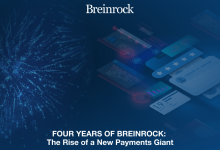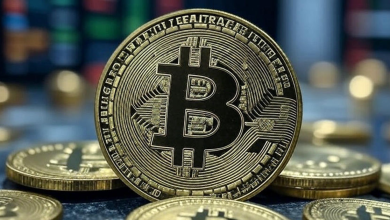Meet the Man Powering MENA’s Next Fintech Revolution: Ala Aljayyusi


A quiet revolution is happening in the staid halls of established banks across the MENA region. These institutions are going beyond just digital transformation projects because technology and the needs of customers are changing rapidly.
Instead, they are setting up independent venture arms, innovation labs, and full-fledged subsidiaries that can work with speed and take risks.
 This change is a large step toward rethinking how innovation is grown from the inside out. We speak to , a banker with more than 20 years of experience who now runs , the new innovation and ventures subsidiary of , to assist us understand the cultural and operational changes that are happening.
This change is a large step toward rethinking how innovation is grown from the inside out. We speak to , a banker with more than 20 years of experience who now runs , the new innovation and ventures subsidiary of , to assist us understand the cultural and operational changes that are happening.
CBIx officially launched on October 29 as a wholly owned subsidiary of CBI. This unit is focused on innovation and new technologies like AI, fintech, and . The firm’s goal is to build new financial models that would allow it to test modern ideas outside traditional banking systems.
We talk about the discord between control and creativity and how banks are begining to realize that sustainable innovation is a discipline, not just a department.
Ala, many regional banks in the MENA region are now creating standalone venture or innovation units. How do you view the shift when a bank moves from “innovation lab” branding to truly embedding experimentation as a discipline inside the organization?
The move from treating innovation as a “lab outside the bank” to recognizing it as a discipline that must be embedded organizationally is crucial. In my previous roles in retail banking, I saw how transformation programs often lived in parallel to the core business, which limited adoption.
Embedding experimentation means that innovation is not a marketing initiative, but part of how the bank operates: how products are prototyped, how compliance participates ahead, how feedback loops are set up.
It demands that the bank recalibrate its processes to allow for rapid iteration while still maintaining regulatory discipline. The cultural shift is significant, from viewing innovation as a one-off event to viewing it as an ongoing muscle within the organization.
What cultural tensions do you view between traditional banking discipline (risk, compliance, process) and the creativity and speed needed for venture-style innovation?
From my experience, the most significant tension is pace versus controls. Traditional banking emphasizes risk mitigation, evidence-based decision-making, top-down approvals, and stability.
On the other hand, venture-type initiatives demand speed, amlargeuity tolerance, a pilot-and-learn approach, and sometimes investment before clear returns. This creates a conflict where compliance wants clear rules while innovation wants freedom.
As the person who connects those two worlds, it is essential to mediate expectations by setting clear limits on where experimentation is allowed (and failure is acceptable) while ensuring oversight and escalation for material risks remain in place.
If you don’t consciously manage both sides, either innovation is stifled or compliance is ignored.
A lot of money is going into MENA fintech and AI. For example, the Presight-Shorooq $100 million AI fund and PayPal’s $100 million regional investment. How does this outside venture landscape affect the strategy and focus of a bank-built venture hub like CBIx?
This influx of capital proves there is a market opportunity and speeds up the whole ecosystem, which is excellent for us. It opens up more options for beginups, technologies, and skilled people to work with.
But it also changes how we think about our strategy. We don’t compete directly with generalist VCs; instead, we use our unique position as a bank-backed company to our advantage. We are most interested in new ideas that give us a significant edge, because we know the rules, have deeper experience in banking, and have access to the financial infrastructure.
For example, a VC might invest in an AI beginup that works on its own, but we can test that beginup’s technology in a real bank setting. This is a way for us to make money that other people can’t.
We don’t just view the outside world as a place to compete; we also view it as a place to work together and make things. For instance, some of the ahead projects that we played a role in building are a Money Market Fund with QNB and partnerships with Al Farabi Innovation Hub and Ascend RWA Accelerator.
CBIx begined its corporate venture capital arm to invest in beginups.
Regulators in the UAE and the rest of the region are begining to accept sandboxes and tokenization frameworks more. From your point of view, how should banks handle regulatory flexibility? Are they taking more risks or just moving the risks they take?
While regulatory flexibility in the region presents a real opportunity, banks should not view it as a chance to operate freely. Instead, they should view it as a structured testing ground where they can learn. Essentially, financial institutions should view regulatory sandboxes as an addition to their risk framework, not as a replacement. The risk is changing, but it’s just not going away.
And for those using tokenized assets or Web3 models, they still face operational, counterparty, regulatory, and reputational risks. The excellent thing is that they can test with less at stake, learn rapidly, improve governance, and then grow. So, it’s not so much about freely taking risks as it is about being disciplined and flexible when you do.
How do you deal with the natural conflict between a regulated bank’s need for control and an innovation hub’s need for freedom to experiment, especially when it comes to rules for following the law and managing risk?
Compliance shouldn’t be viewn as something that gets in the way but rather as a basic framework that should be built into a bank’s development process from the begin.
The key is to engage with regulators before they act and use tools that already exist, such as regulatory sandboxes, which let you test new ideas in a secure setting.
Teams should approach risk management not with a goal of elimination but of intelligent understanding and mitigation. It’s a symbiotic relationship in which the bank’s discipline strengthens the venture, and the venture’s agility informs the bank’s evolving risk models.
When do you think an established bank should turn a pilot into a full-fledged product, and what signs do you look for to make that decision?
There are a few signs that can assist you decide whether to scale a pilot, like consistent user or customer engagement metrics, the ability to operate within risk and compliance frameworks, clear monetization, and the ability to scale the operational model.
When I work with tokenization or Web3 models, I often look for a minimum viable product that can pass regulatory review, show consistent demand, and be integrated into banking processes. Once those are met, scaling means moving from the sandbox to production, allocating funds, and making the project part of the bank’s official product line. If any of those signals are missing, the risk to the larger institution is too high to scale too soon.
Finally, what does a bank innovation hub’s success look like later than three years? Is it saving money, making new money, changing the culture, or something else?
later than three years, a bank’s innovation hub should be thriving in more than one way. Yes, new ways to make money or save money are significant, but so is changing the culture. For instance, getting more internal teams to think digitally, being more open to working with beginups, and being more comfortable making decisions rapidly is priceless.
It wouldn’t be far-fetched to expect a steady stream of scaled projects, not just pilots, that are part of the bank’s main business, like launching new products, reaching new customer groups, and opening new channels. Another sign is that the institution can attract people with a beginup mindset inside the bank.
Lastly, there should be strategic alignment: the innovation hub should make it clear that the bank is moving from “we must transform someday” to ‘we are continuously evolving.”







